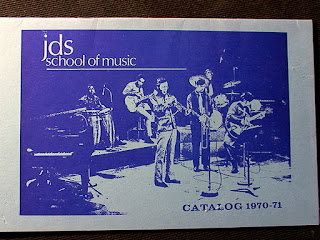It's a truism that jazz was forged from a number of different elements: ragtime, blues, folk songs, European structures... As the music continued on its merry way, it flirted with other influences. These became temporary add-ons, were discarded, or became fully woven into the jazz fabric.
Of course, deciding when an "influence" becomes an established part of the fabric is open to debate. For

example, to what extent was "the
Spanish Tinge" already woven into the jazz fabric before Jelly Roll Morton started hyping it (probably so he could claim it as his own invention)? Or, how much credit does
Fletcher Henderson deserve for the mutation of 'call-and-response' into big band orchestration techniques?
In some cases, influence was too diverse to assign individual credit. For example, the strain of Jewish music known as Klezmer ("instrumental music") that eventually infused the swing movement was nurtured, starting in the late 1920's. by a squadron of Jewish musicians (Benny and Harry Goodman, Ziggy Elman, Manny Klein, Artie Shaw...).
There have actually been very few individual musicians clearly visible on the cutting edge of new influences which had an impact on jazz. Here are a few choices (Early Jazz is too much of a stew, so after that):
George Gershwin's contribution is associated closely with the phrase "melting pot." It's too bad, as such a reductionist phrase debases his singular ability to filter disparate influences through his own sensibility and achieve great results-i.e., Harlem stride, the Cantorial tradition, Tin Pan Alley, transitional musical theatre and, in Porgy and Bess, opera and Gullah folk culture.
Dizzy Gillespie next comes to mind. After he became exposed to Cuban musicians like
Chano Pozo(picture left) and
Machito in 1940's New York, he championed the creation of Afro-Cuban music. Dizzy's long term influence, not only as a bop pioneer, but as a hybrid-izer of jazz with other musics is unassailable.

In the late 50's, jazz
Bossa Nova albums started to show up and here it seems to me you have the most intensive byplay with a fully-formed music from another culture that jazz has ever seen. Brazilian musicians started performing regularly in the US and Bossa Nova compositions entered widely into standard jazz repertoire. The popular culmination of the movement was the album
Getz/Gilberto, released in 1964; an album that continues to sell well. Can you then place due credit in the hands of Stan Getz? Not in the sense that I've been using it here. After all, this was a genuine collaboration between Getz and Joao Gilberto, not Getz introducing an foreign strain into jazz.

At about the same time, a number of jazz musicians turned their attention to Asia, East and South Asia. Two musicians were exemplary in developing those influences in two very different ways.
One was flautist and saxophonist
Paul Horn who, in the late 1950's, was part of a coterie of
West Coast musicians using scales from other parts of the world and unusual time signatures. he (and that cohort) continued to develop that direction, but in the late 1960's, Horn broke from the crowd and did a series of recordings in sacred and highly resonant places like the Taj Mahal, the Great Pyramid and a Cathedral in the Ukraine. It was an effort to join jazz and meditation and the results might be characterized as early "New Age" music.
John Coltrane was the other musician most occupied with world-especially
Indian-music. Trane's
Giant Steps album from 1959 included the song "India" and until he died in 1967, most of his recordings had at least some specifically Indian touchstones.
Technically, there were areas of mutual concern between Trane and Horn: scales, drones, pedal points and the development of slow, rubato sections(alaap). But, unlike Horn's meditative, echoic, melodic excursions, Trane's music, as we know, explored the edge of consciousness in
a very different way.

I would also mention
Yusef Lateef as an important exponent of Eastern elements at that time.
More foreign elements have been introduced into jazz since that time, but the process has changed completely. Starting in the 1960's, jazz became globally available and musicians from all over the world mastered the music. The language of Armstrong, Parker, Coltrane, Ayler, etc., became a
global language.
If musicians in another country infuse elements of their own culture into jazz, they are likely to do that while developing in their homeland and bring that fusion with them when they come to America, either as visitors or expats. Examples might include Dollar Brand and Hugh Masakela from South Africa, Miroslav Vitous from Prague, Jean Luc Ponty from France, Neils-Henning Orsted Pederson from Denmark, or Arturo Sandoval from Cuba. It's unlikely (and might be been seen as a form of musical colonialism) for an American jazz musician to use, let's say, Finnish folk themes as compositional motifs.
Collaboration has replaced Introduction.
























































